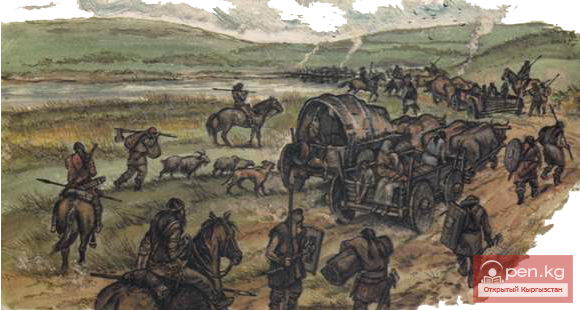The Basis of the “Great Campaign” in the Epic of “Manas”
According to Ibn al-Asir (“Kitab alara-kitai kamil fit-tarikh”), in 1128, the Kara-Kitai invaded the territories of the Eastern Karakhanids, but they were defeated by the great khan Ahmed. After that, he died and his place was taken by Ibrahim, his son. The defeated parts of the Kara-Kitai, led by Yeluy Dashi, likely fled to Orkhon, where in the fortress of Khotun they gathered 20,000 veteran warriors, replenishing their numbers with Kidan (Kara-Kitai) refugees and arrived in Beitin (Beshbalyk). Here, with the help of the leaders of seven regions and 18 tribes, they assembled an additional cavalry corps of 10,000, and the head of the Kara-Kitai declared himself gurkhan. It is likely that part of the Kidan (Kara-Kitai), “somewhere in early 1130, passed through Uyghuria and reached the blessed valley of the Emel River.”
Between 1128–1130 or 1130–1133, the Kyrgyz, led by the supreme khan of the Eastern Karakhanids Ibrahim ibn Ahmed, could have launched a great campaign against Beitin (Beijing-Beshbalyk) against the Kara-Kitai. This event may have been mentioned in a letter from Sultan Sanjar to the Baghdad vizier, written in July 1133. It reported on the recent victory of the Kashgar khan over the “infidels” and the capture of their leader. We believe that these events formed the basis of the “Great Campaign” in the epic of “Manas,” although the foundation of the “Great Campaign” could also be based on the events related to the defeat of the Kara-Kitai by the great khan Ahmed in 1128, when they invaded the territories of the Eastern Karakhanid khanate. However, these events likely also take place in the epic of “Manas.”











































